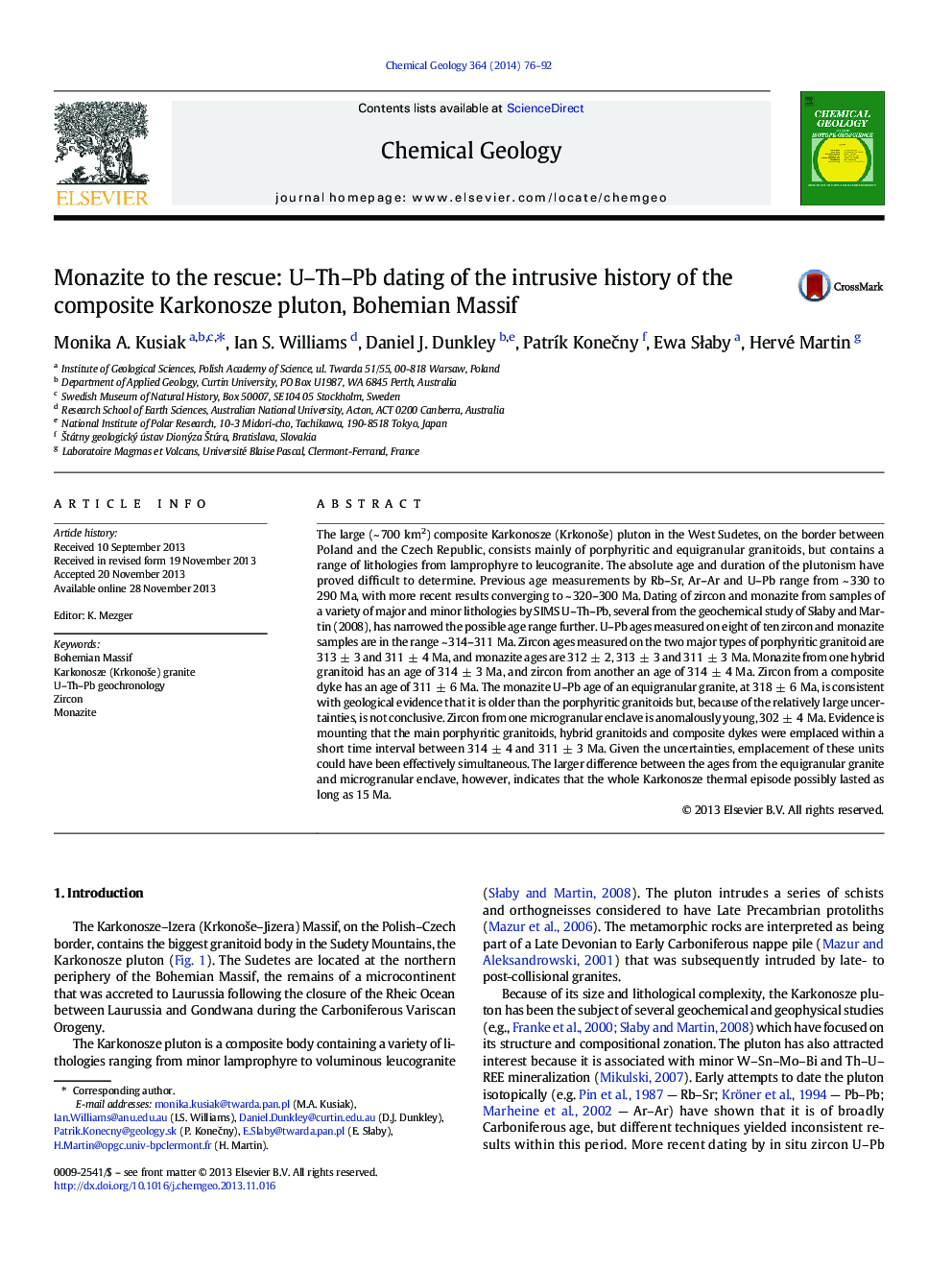| کد مقاله | کد نشریه | سال انتشار | مقاله انگلیسی | نسخه تمام متن |
|---|---|---|---|---|
| 4698885 | 1637606 | 2014 | 17 صفحه PDF | دانلود رایگان |

• This is the largest geochronological dataset obtained yet for Karkonosze pluton.
• Monazite dating assist with the interpretation of complex zircon data.
• Consistent ages demonstrate rapid evolution of magma produced by mixing.
• Improved geochronology assists in the understanding of the stage of Variscan orogenesis.
The large (~ 700 km2) composite Karkonosze (Krkonoše) pluton in the West Sudetes, on the border between Poland and the Czech Republic, consists mainly of porphyritic and equigranular granitoids, but contains a range of lithologies from lamprophyre to leucogranite. The absolute age and duration of the plutonism have proved difficult to determine. Previous age measurements by Rb–Sr, Ar–Ar and U–Pb range from ~ 330 to 290 Ma, with more recent results converging to ~ 320–300 Ma. Dating of zircon and monazite from samples of a variety of major and minor lithologies by SIMS U–Th–Pb, several from the geochemical study of Słaby and Martin (2008), has narrowed the possible age range further. U–Pb ages measured on eight of ten zircon and monazite samples are in the range ~ 314–311 Ma. Zircon ages measured on the two major types of porphyritic granitoid are 313 ± 3 and 311 ± 4 Ma, and monazite ages are 312 ± 2, 313 ± 3 and 311 ± 3 Ma. Monazite from one hybrid granitoid has an age of 314 ± 3 Ma, and zircon from another an age of 314 ± 4 Ma. Zircon from a composite dyke has an age of 311 ± 6 Ma. The monazite U–Pb age of an equigranular granite, at 318 ± 6 Ma, is consistent with geological evidence that it is older than the porphyritic granitoids but, because of the relatively large uncertainties, is not conclusive. Zircon from one microgranular enclave is anomalously young, 302 ± 4 Ma. Evidence is mounting that the main porphyritic granitoids, hybrid granitoids and composite dykes were emplaced within a short time interval between 314 ± 4 and 311 ± 3 Ma. Given the uncertainties, emplacement of these units could have been effectively simultaneous. The larger difference between the ages from the equigranular granite and microgranular enclave, however, indicates that the whole Karkonosze thermal episode possibly lasted as long as 15 Ma.
Journal: Chemical Geology - Volume 364, 22 January 2014, Pages 76–92